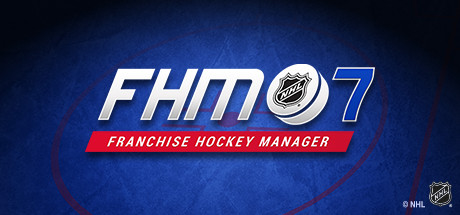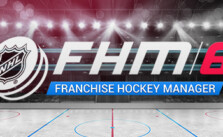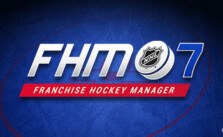Franchise Hockey Manager 7 – Goaltender Attributes
Goalie attributes can be divided into four subgroups beyond their basic categories:
1. The three location-specific attributes:
Blocker
The goalie’s ability to stop shots aimed high on his stick side.
Glove
The goalie’s ability to stop shots aimed high on his glove side.
Low Shots
The goalie’s ability to stop shots aimed below the reach of his glove/blocker, on either side or through the 5-hole.
In combination, these three attributes, relative to each other, should identify the goalie’s strengths and weaknesses at handling different shot locations. Goaltending style may provide a slight hint to which shot location to favour for a goaltender – standup being worse at low shots and better at high ones than hybrid/butterfly.
2. The “core” goaltending attributes that have the largest effect on deciding whether or not he makes a save and what happens afterward:
Positioning
The goalie’s ability to position himself in the best technical way to make the save – judging angles, going down at the right time if necessary, coming out or staying in the net as the situation dictates, etc.
Rebound
The goalie’s ability to control the frequency, direction, and distance of rebounds after he makes a save.
Recovery
The goalie’s ability to get into position again after making (or just attempting) a save – i.e., his ability to make the “second save.”
Reflexes
The physical ability of the goalie to respond quickly to a shot, both in terms of reflexes and agility.
Positioning and Reflexes have the largest single effect on the goalie’s ability to make saves, so be aware that rating them significantly higher than any other goaltending attribute may make the goaltender much better than you intended; likewise making them both much lower than average may make the goalie unrealistically ineffective in his current league.
Goaltending style can suggest the relationships between these attributes. Standup goalies should get good Recovery ratings, as they tend to retain balance after making a save, but will probably have comparatively low Reflex attributes as they’re deliberately restricting the range of their movement. Hybrids tend to have the best Rebound control. Butterfly goaltenders may tend to be a little higher in the Reflex ratings. Positioning is the one attribute that shouldn’t be influenced much by style.
3. The “non-core” attributes: things that have little or no effect on a goalie’s ability to stop a shot:
Passing
The goalie’s ability to make an accurate and intelligent pass to a teammate – the “intelligent” part should be the bigger consideration, goalies notable for making bad decisions about who to pass to should get a low number here even if they get quite a few assists for a goalie.
Poke Check
The goalie’s ability to knock the puck away from a player close to the net, particularly on breakaways, and his ability to intercept passes across or near the crease. This is the one attribute of the four that does contribute, in a very minor way, to a goalie’s save percentage.
Puckhandling
The goalie’s ability to hold onto the puck while carrying it, i.e. resisting attempts by opponents to strip him of the puck when he’s out of the net.
Skating
The goalie’s skating ability – players get their skating broken down into four categories (Accerleration, Agility, Balance, and Speed), but since goalies only have one it has to take into account all of those factors.
4: The mental attributes for goaltenders:
There are two mental attributes that are specific to goaltenders, the rest are the same as their skater equivalents:
Mental Toughness
The goaltender’s ability to recover after letting in a goal. A low rating means he’s more likely to have his confidence shaken when he’s scored upon, leading to a temporary decline in his other attributes; a high rating means unshakeable confidence even when getting blown out badly.
Goaltender Stamina
The goaltender’s ability to recover from fatigue between games, allowing him to be ready in time for his next start – i.e., regular starters will tend to get higher stamina numbers. Be careful not to give a player a low number here just because he’s a backup at a particular level – instead, check his stats at other levels – the players who get high numbers here will be the ones who, when they were starters, have played an unsually high percentage of their team’s games.





